*NURSING > QUESTIONS & ANSWERS > Chapter 31: The Infant and Family Perry: Maternal Child Nursing Care Test Bank, 6th Edition Alread (All)
Chapter 31: The Infant and Family Perry: Maternal Child Nursing Care Test Bank, 6th Edition Already Rated A+
Document Content and Description Below
1. Which statement accurately describes an event associated with an infant's physical development? a. Anterior fontanel closes by age 6 to 10 months. b. Binocularity is well established by age 8 m... onths. c. Birth weight doubles by age 5 months and triples by age 1 year. d. Maternal iron stores persist during the first 12 months of life. Ans- ANS: C Growth is very rapid during the first year of life. The birth weight approximately doubles by age 5 to 6 months and triples by age 1 year. The anterior fontanel closes at age 12 to 18 months. Binocularity is not established until age 15 months. Maternal iron stores are usually depleted by age 6 months. 2. The nurse assessing a 6-month-old healthy infant who weighed 7 lbs at birth, shares with the parents that the infant should weigh approximately how many pounds? a. 10 lbs. b. 15 lbs. c. 20 lbs. d. 25 lbs. Ans- ANS: B Birth weight doubles at about age 5 to 6 months. At 6 months, an infant who weighed 7 lbs at birth would weigh approximately 15 lbs. Ten pounds is too little; the infant would have gone from the 50th percentile at birth to below the 5th percentile. Twenty pounds or more is too much; the infant would have tripled the birth weight at 6 months. 3. The nurse is doing a routine assessment on a 14-month-old infant and notes that the anterior fontanel is closed. This should be interpreted as: a. a normal finding. b. a questionable finding—the infant should be rechecked in 1 month. c. an abnormal finding—indicates the need for immediate referral to a practitioner. d. an abnormal finding—indicates the need for developmental assessment. Ans- ANS: A Because the anterior fontanel normally closes between ages 12 and 18 months, this is a normal finding, and no further intervention is required. 4. By what age does the posterior fontanel usually close? a. 6 to 8 weeks b. 10 to 12 weeks c. 4 to 6 months d. 8 to 10 months Ans- ANS: A The bones surrounding the posterior fontanel fuse and close by age 6 to 8 weeks. Ten weeks or longer is too late and indicates a problem. 5. The parents of a 9-month-old infant tell the nurse that they have noticed foods such as peas and corn are not completely digested and can be seen in their infant's stool. The nurse bases her explanation on what fact? a. Children should not be given fibrous foods until the digestive tract matures at age 4 years. b. The infant should not be given any solid foods until this digestive problem is resolved. c. This is abnormal and requires further investigation. d. This is normal because of the immaturity of digestive processes at this age. Ans- ANS: D The immaturity of the digestive tract is evident in the appearance of the stools. Solid foods are passed incompletely broken down in the feces but it is not necessity to eliminate solid foods. An excess quantity of fiber predisposes the child to large, bulky stools. This is a normal part of the maturational process, and no further investigation is necessary. 6. A 3-month-old infant, born at 38 weeks of gestation, will hold a rattle if it is put in her hands; however, she will not voluntarily grasp it. How should the nurse interpret this behavior? a. Normal development b. Significant developmental lag c. Slightly delayed development caused by prematurity d. Suggestive of a neurologic disorder such as cerebral palsy Ans- ANS: A This indicates normal development. Reflexive grasping occurs during the first 2 to 3 months and then gradually becomes voluntary. No evidence of developmental lag, delayed development, or neurologic dysfunction is present by this behavior. 7. The nurse determines an infant of 7 months is demonstrating appropriate fine motor development when performing which action? a. Transferring a rattler from one hand to the other. b. Using thumb and index finger to grasp a piece of food. c. Holding a crayon and make a mark on paper. d. Releasing cubes into a cup. Ans- ANS: A By age 7 months, infants can transfer objects from one hand to the other, crossing the midline. The crude pincer grasp is apparent at about age 9 months. The infant can scribble spontaneously at age 15 months. [Show More]
Last updated: 1 year ago
Preview 1 out of 25 pages
Instant download
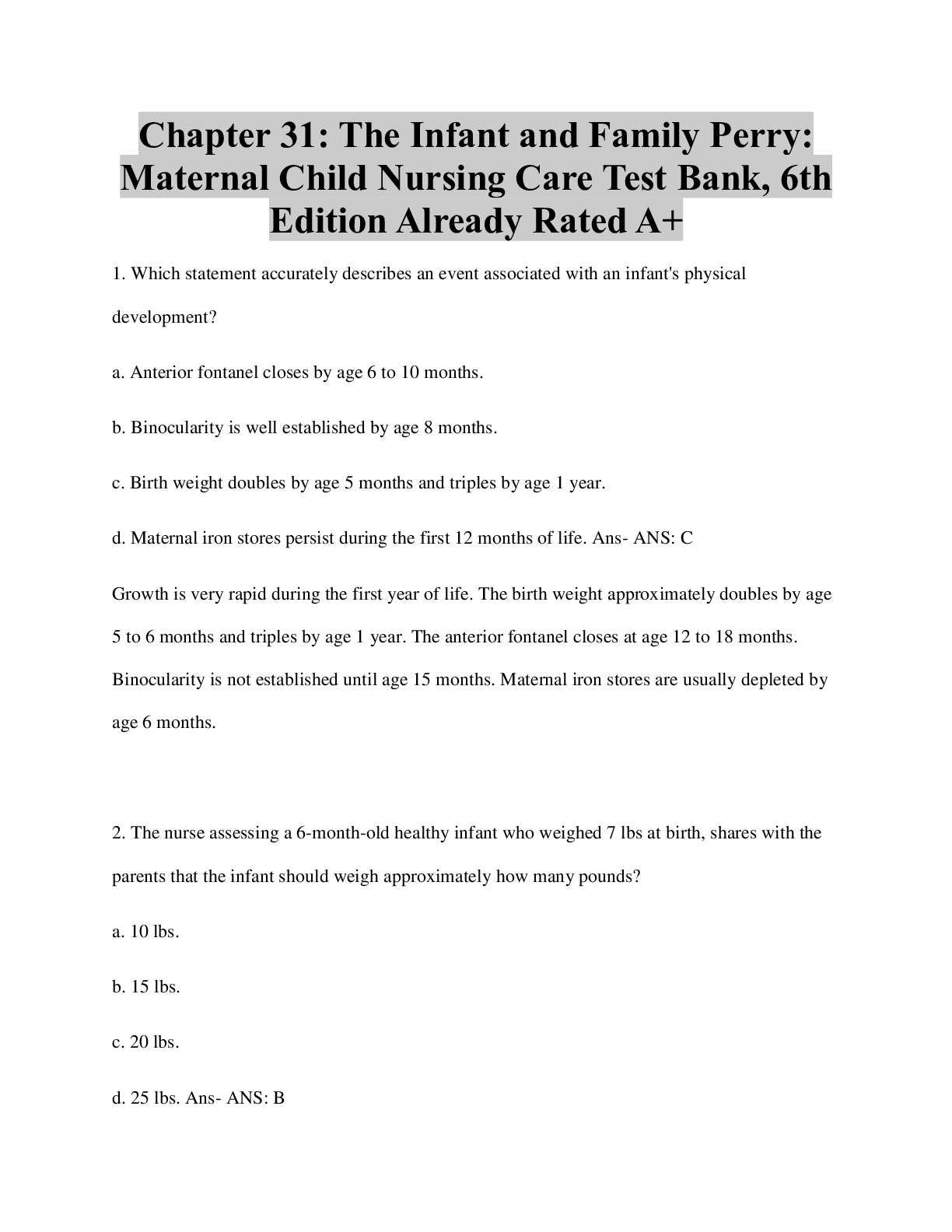
Buy this document to get the full access instantly
Instant Download Access after purchase
Add to cartInstant download
Reviews( 0 )
Document information
Connected school, study & course
About the document
Uploaded On
Feb 11, 2023
Number of pages
25
Written in
Additional information
This document has been written for:
Uploaded
Feb 11, 2023
Downloads
0
Views
70

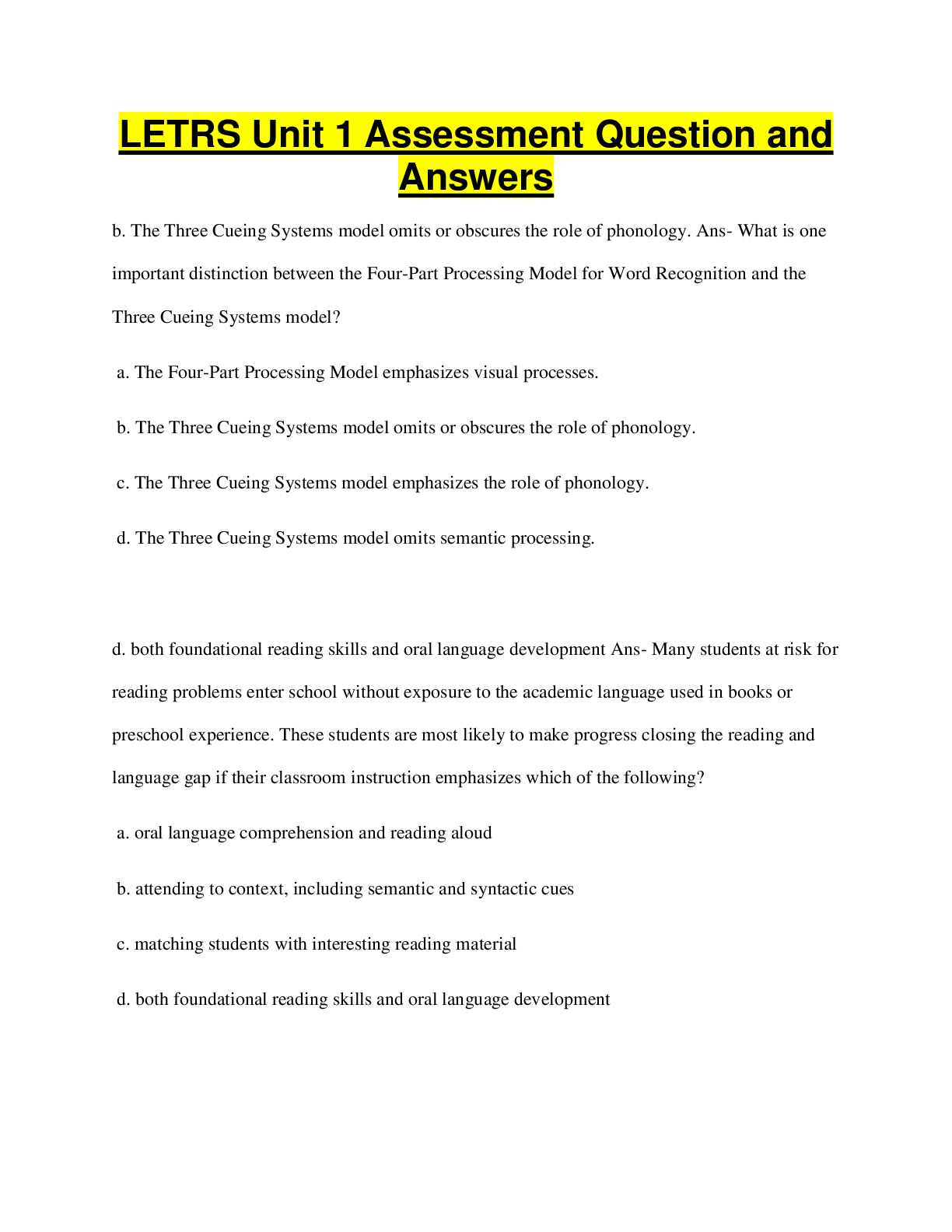
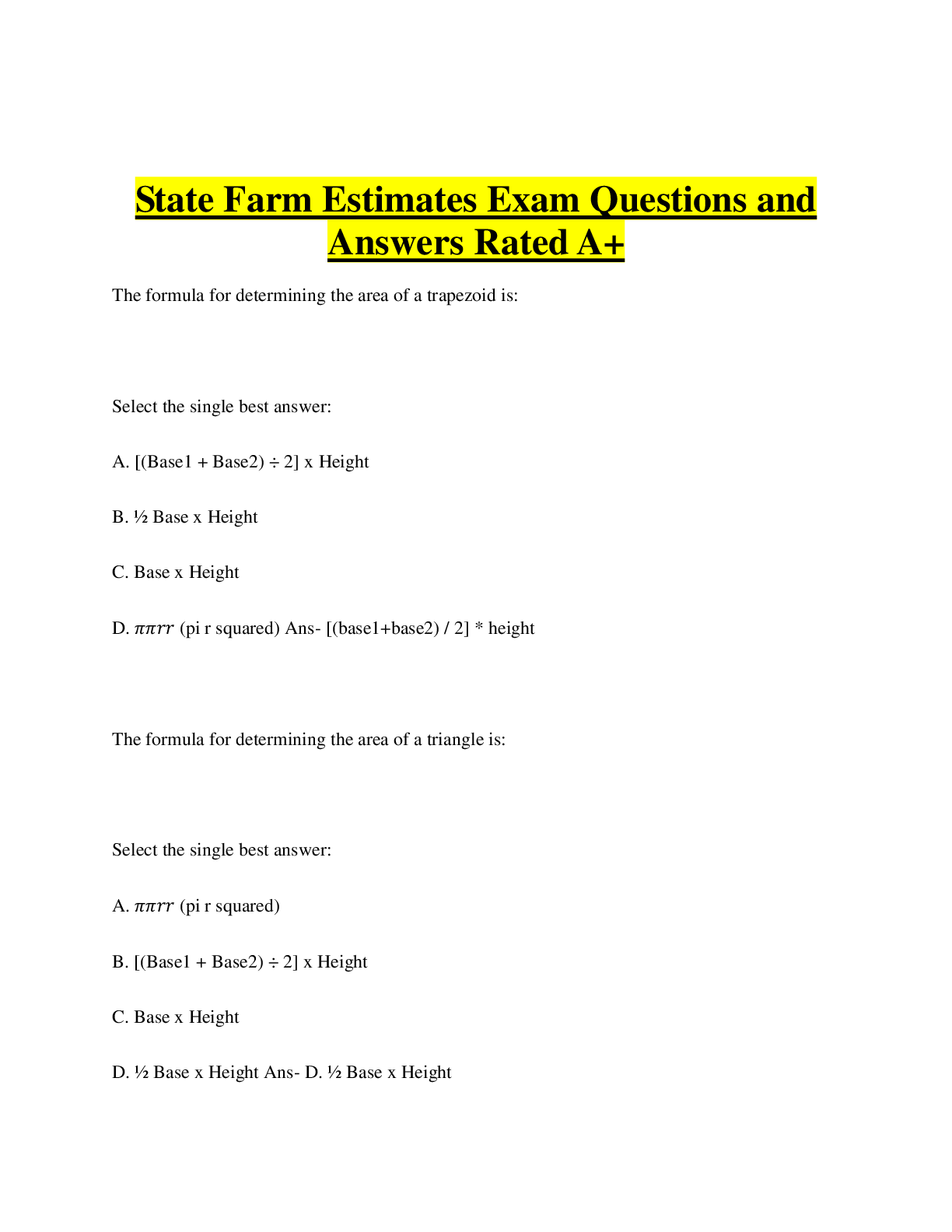

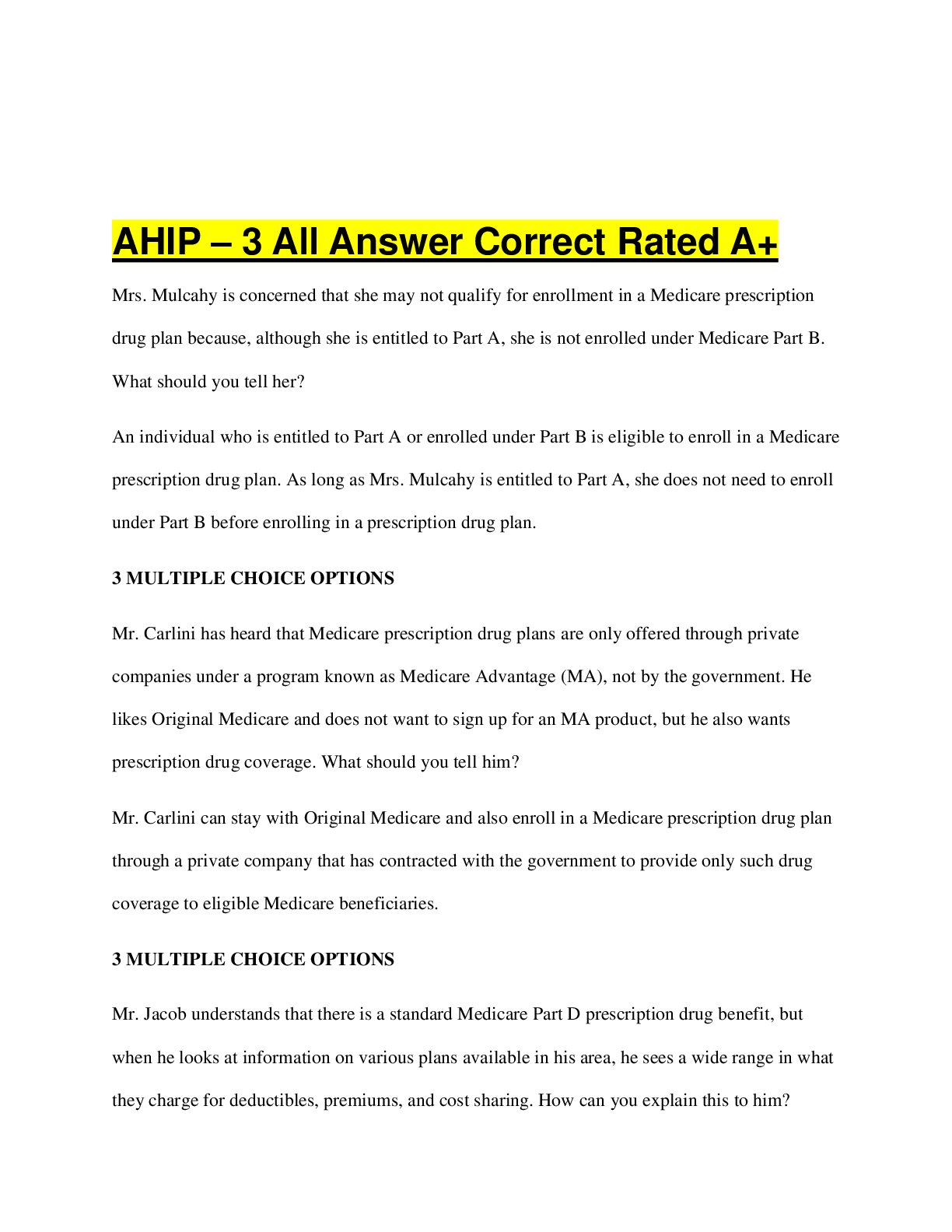
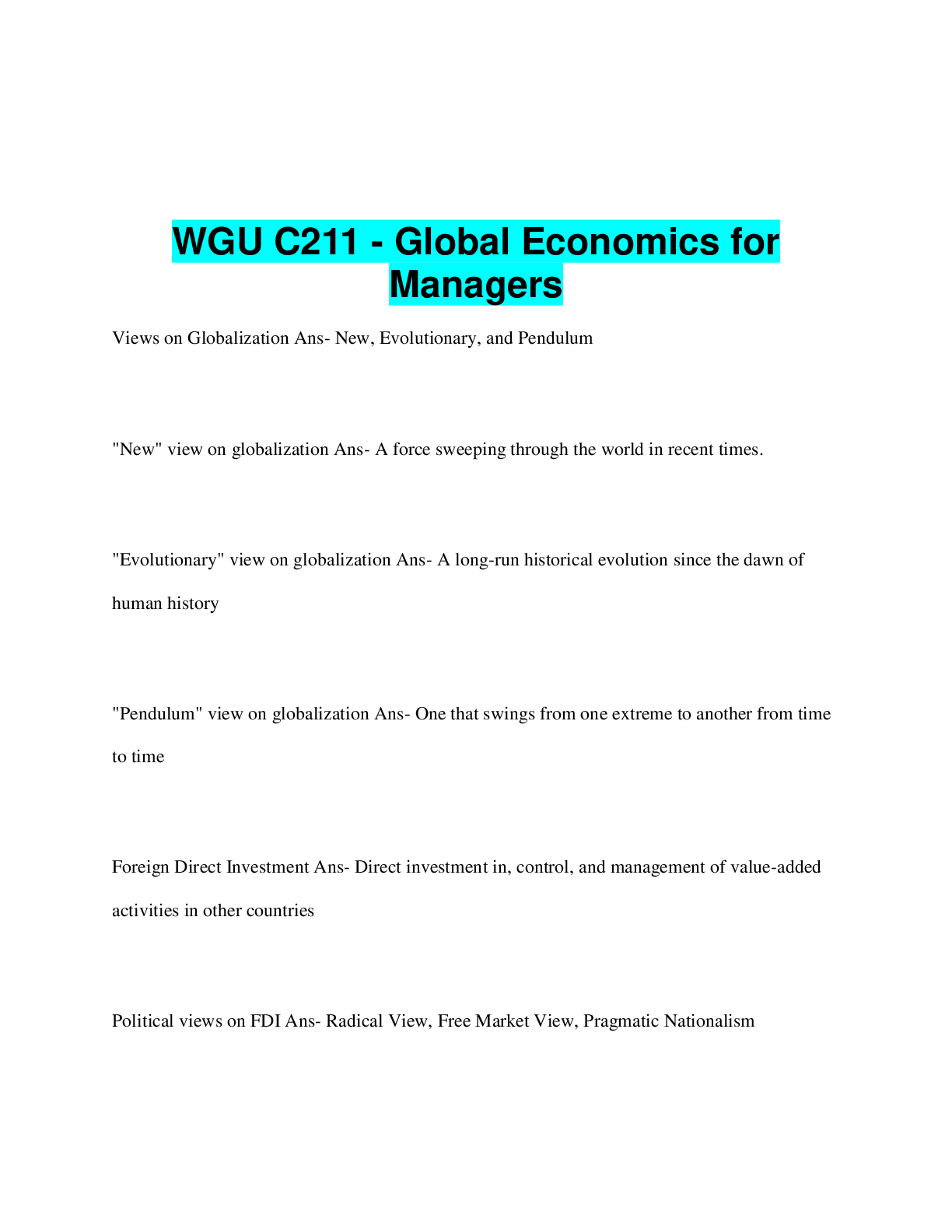
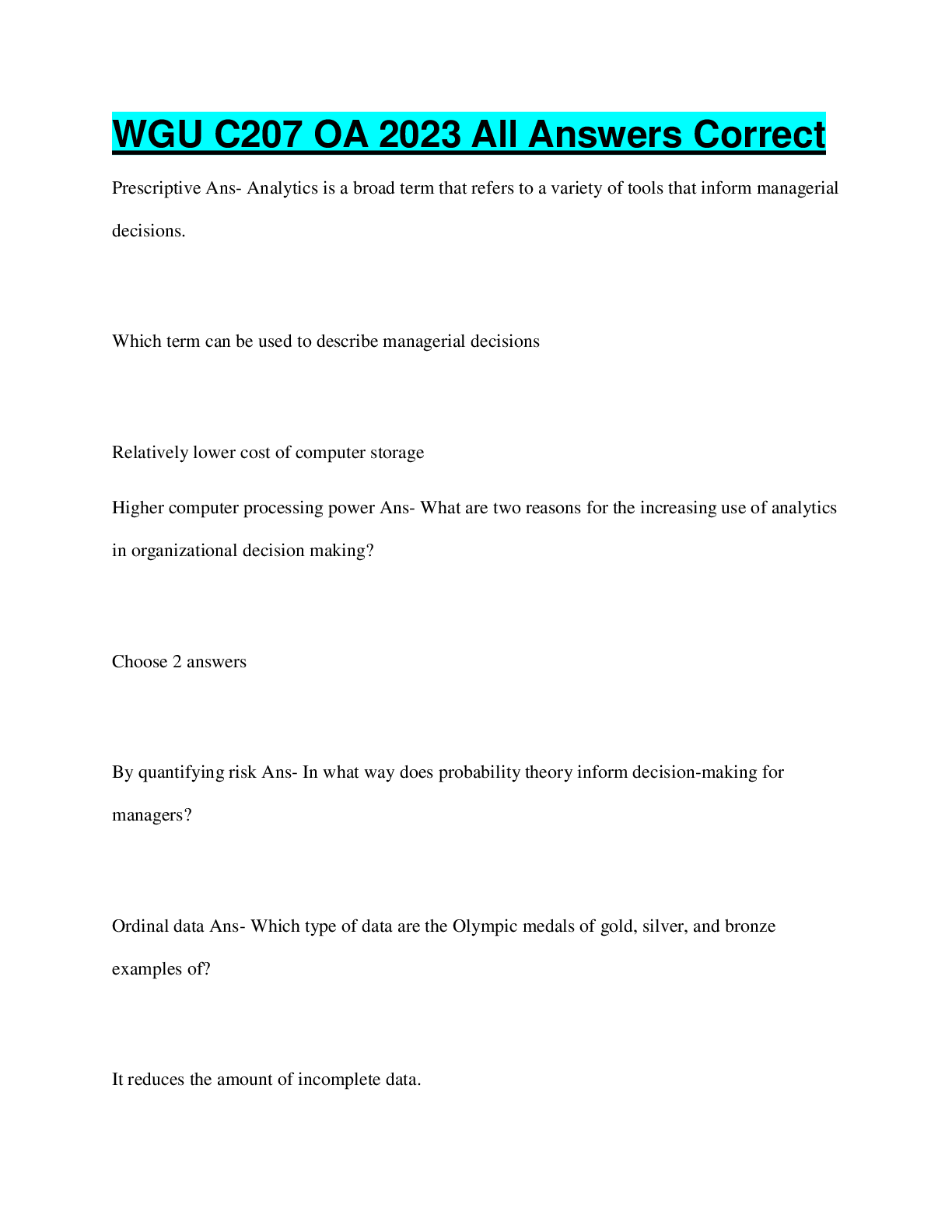

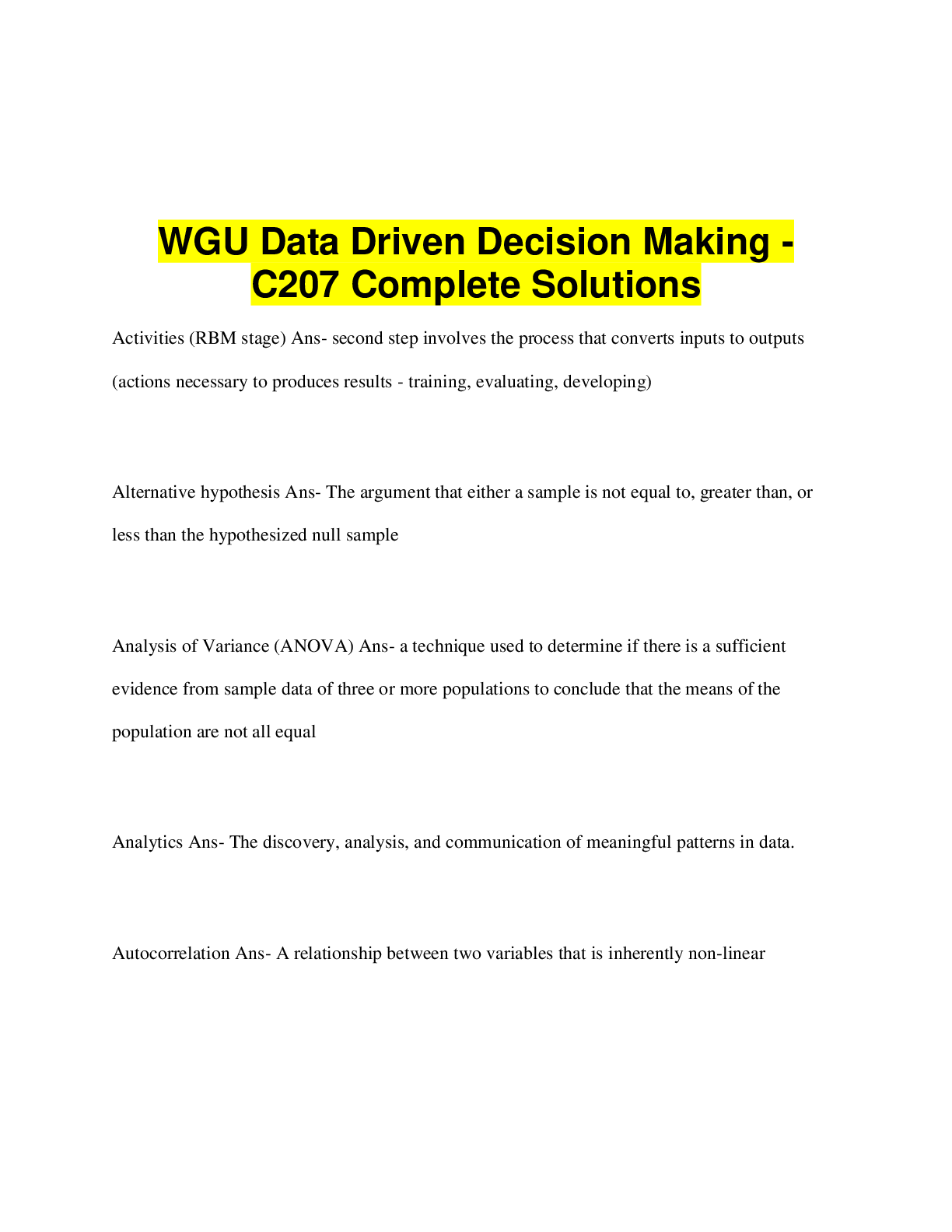


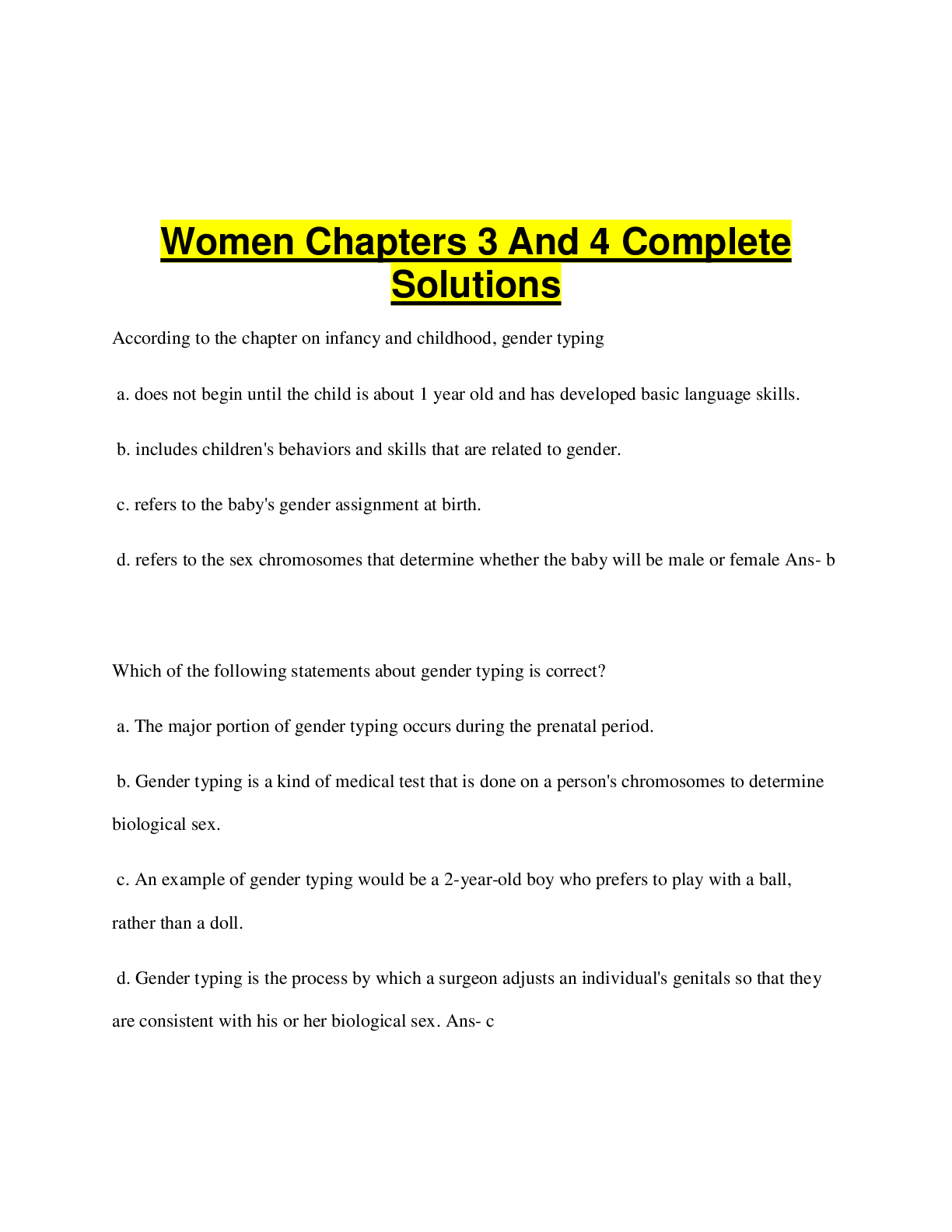
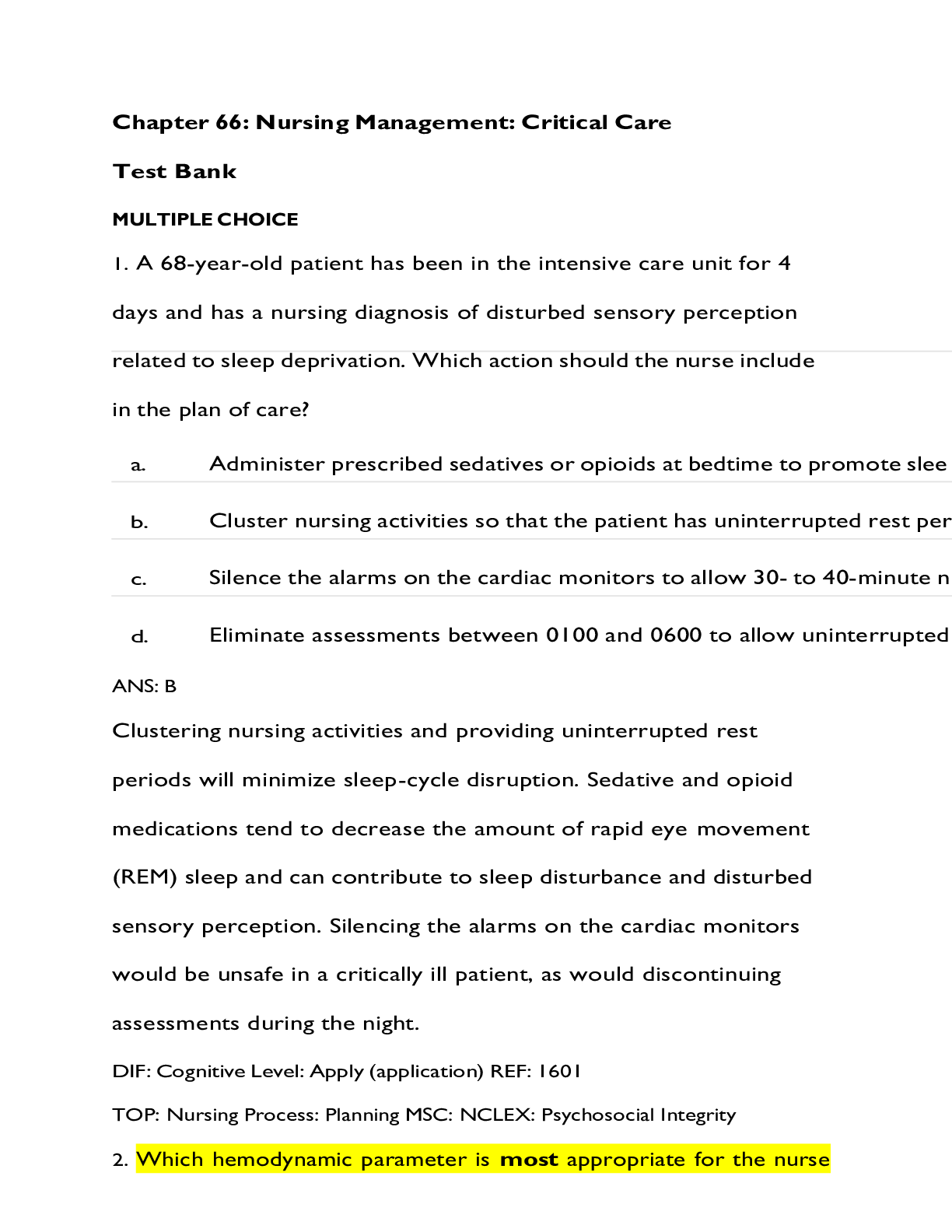

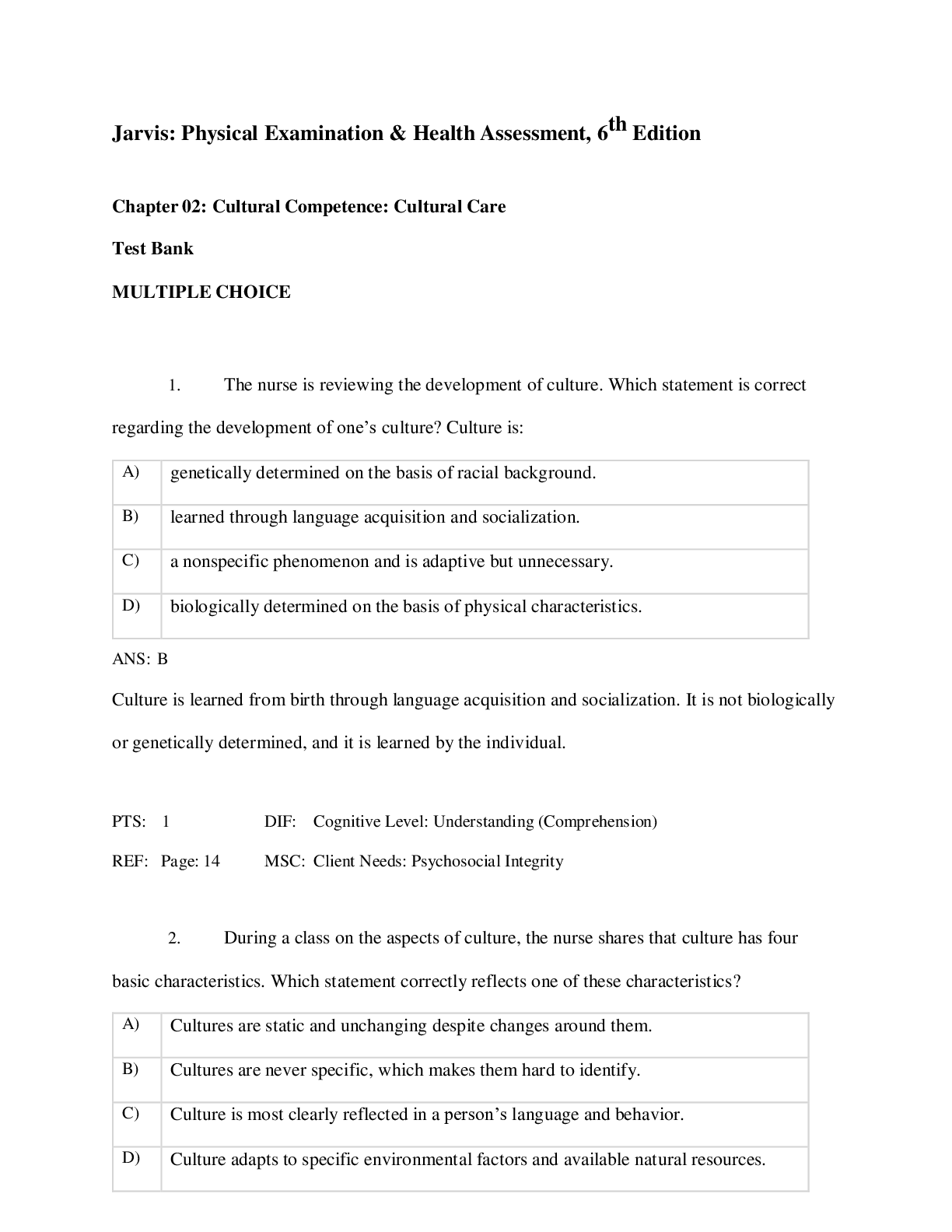
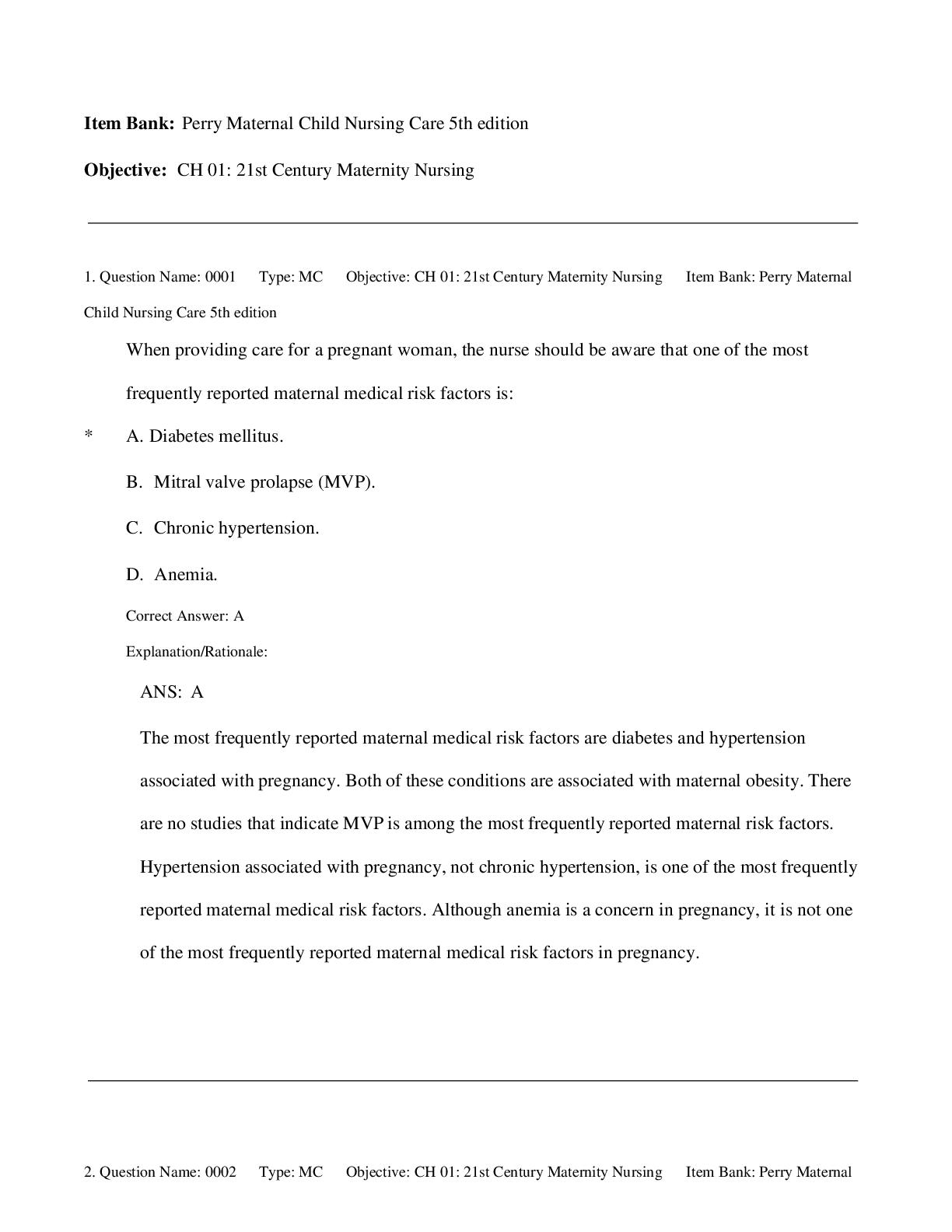
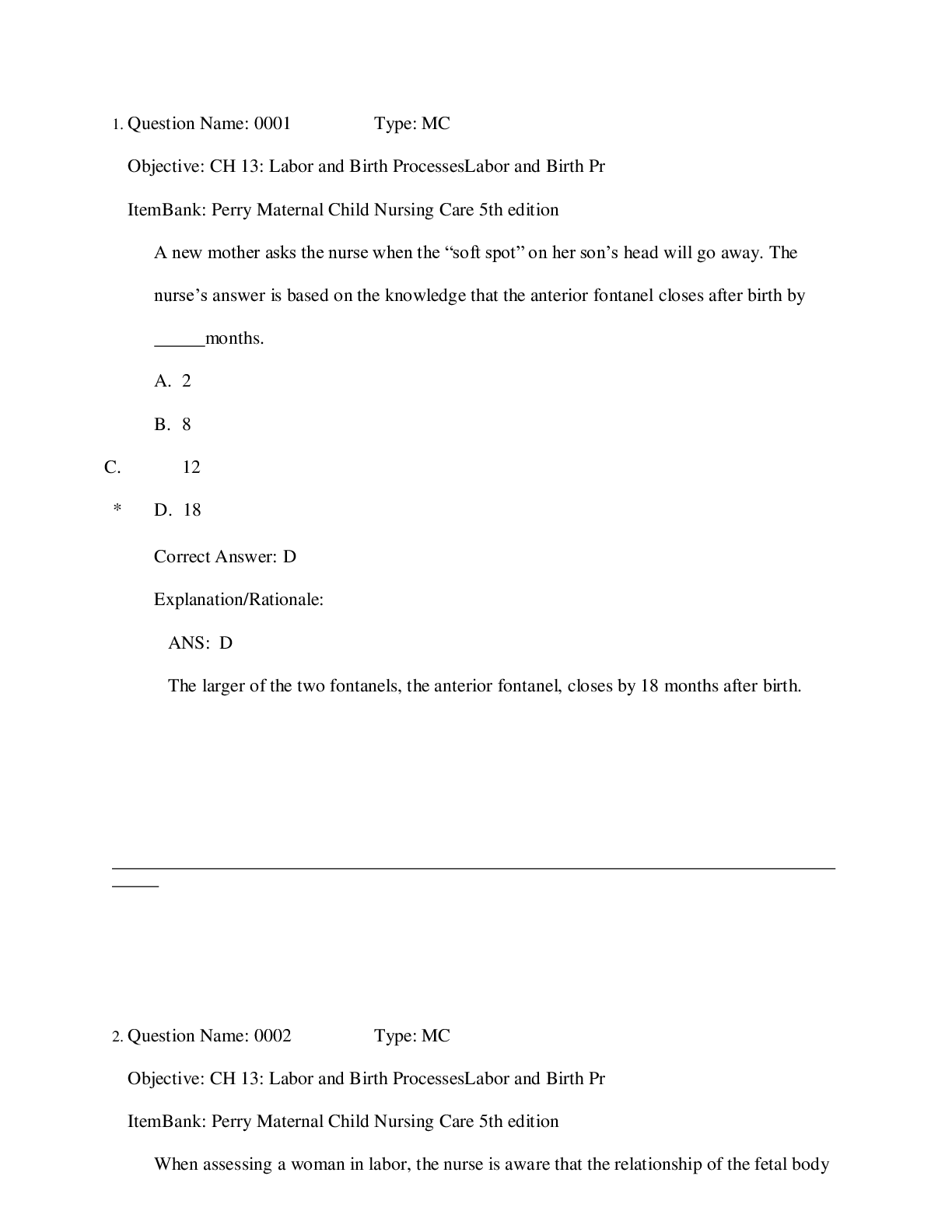
, Latest Questions and Answers with Explanations, All Correct Study Guide, Download to Score A.png)
, Latest Questions and Answers with Explanations, All Correct Study Guide, Download to Score A.png)
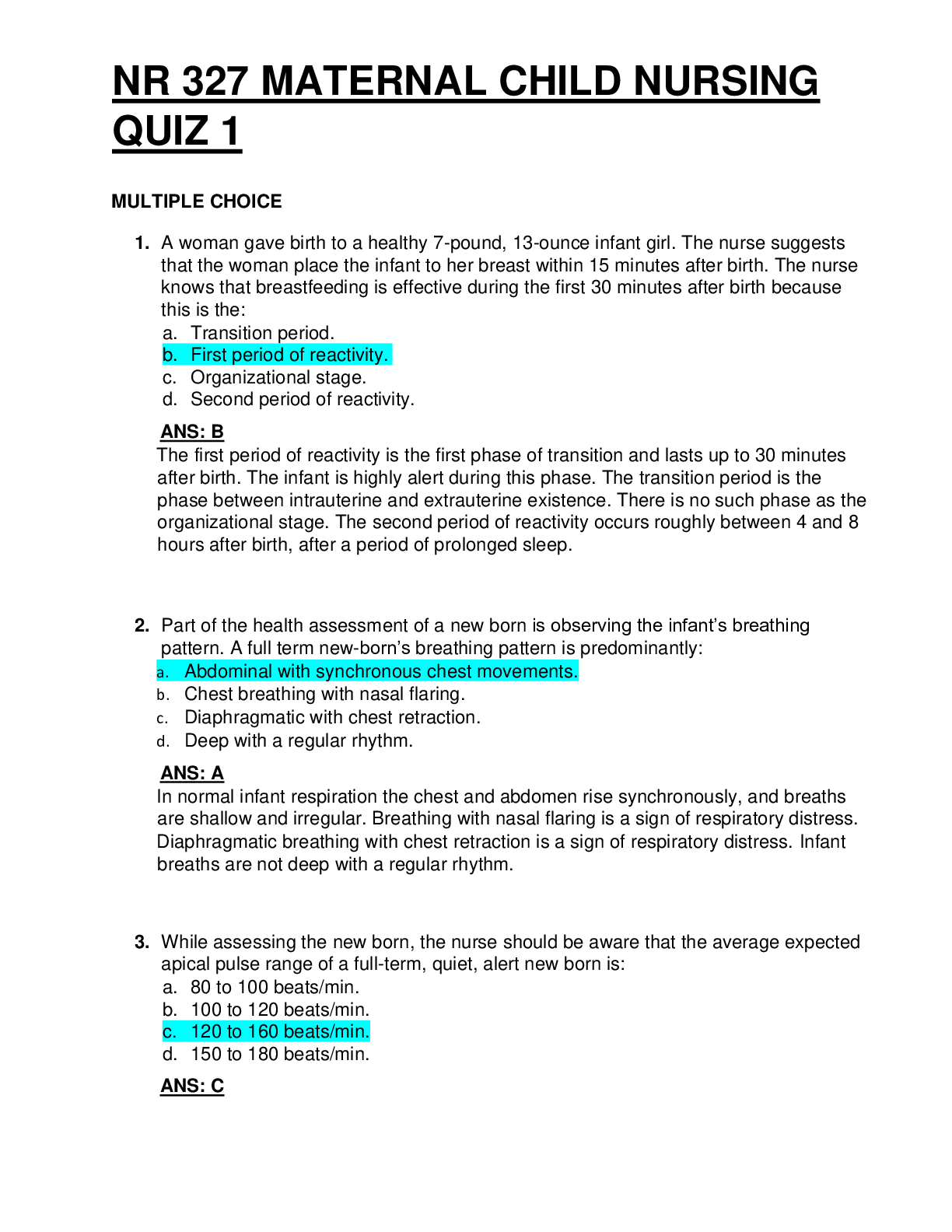

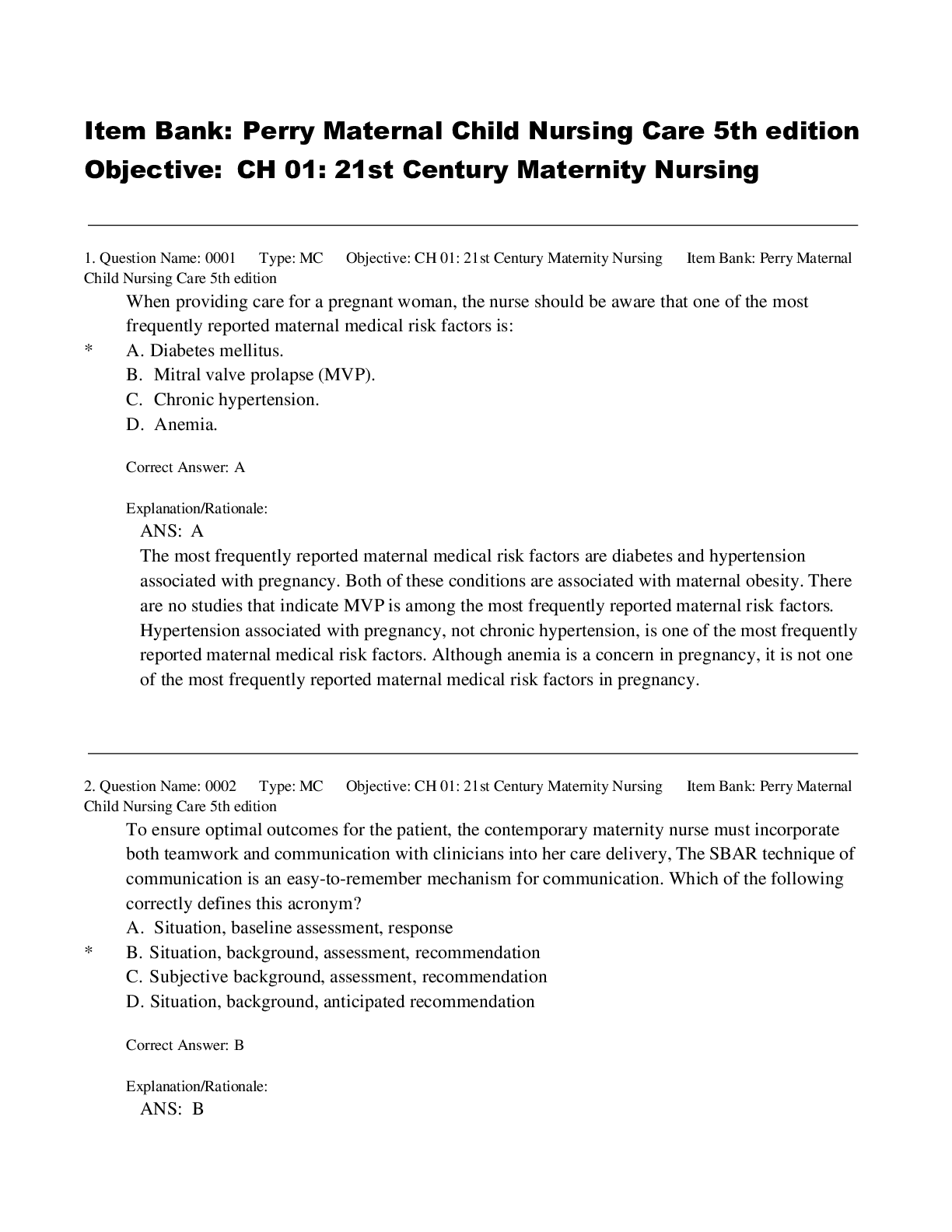
.png)

